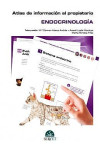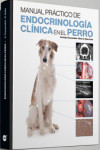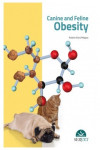FELINE ENDOCRINOLOGY
Edward C. Feldman, Federico Fracassi, Mark E. Peterson
Datos técnicos
- ISBN 9788821448379
- Año Edición 2019
- Páginas 676
- Encuadernación Tapa Dura
- Idioma Inglés
Sinopsis
Developed by the most renowned experts in this field, this unique and practical handbook of feline endocrinology will be the most valuable tool for small animal veterinarians who want to deepen their understanding on the pathophysiology, clinical signs, diagnosis, treatment, and prognosis of every endocrine condition recognized in cats. Rather than have the authors treating cats as small dogs, a cat-only text will allow fully focused description of conditions in this one species. Allowing these experts in feline endocrinology space to fully teach us what they have learned about cats will result in a superior resource composed of text, figures, boxes, tables, algorithms, and videos (presented on an electronic version of the text).
Índice
SECTION 1 - HYPOTHALAMUS AND PITUITARY
Chapter 1 Pituitary anatomy and physiology
Pituitary anatomy
Pituitary physiology
Hormones of the adenohypophysis (AL)
Hormones of the neurohypophysis
Chapter 2 GH excess: acromegaly (hypersomatotropism)
Background and history
Incidence and pathogenesis
Pituitary pathology
Consequences of pituitary pathology
Clinical features and diagnosis
Treatment
Prognosis
Chapter 3 Other pituitary tumors
Pituitary masses: hyperplasia, adenoma or carcinoma?
Incidence and cell origins of pituitary tumors
Effect of pituitary tumors on target organs and the direct effects of large tumors
Functional consequences of autonomous hormone production
Chapter 4 Pituitary surgery
Introduction and general observations
Surgical anatomy
Imaging of the feline pituitary gland
Pituitary adenomas
Transsphenoidal hypophysectomy
Postoperative care
Complications after pituitary surgery
Prognosis
Chapter 5 Pituitary irradiation
Introduction
Clinical presentation
Advanced imaging
Role of radiation therapy
Modalities of radiation therapy
Nonfunctioning tumors
Growth hormone-secreting pituitary tumors and acromegaly
Adrenocorticotropic hormone-secreting pituitary tumors and feline Cushing’s disease
Radiation-related adverse effects
Chapter 6 Pituitary GH deficiency and pituitary dwarfism
Introduction
Etiopathogenesis
Clinical features
Differential diagnosis for failure to grow
Diagnosis
Treatment
Chapter 7 Polyuria, polydipsia and diabetes insipidus
Introduction
Water requirements in healthy cats
Urine concentrating ability in healthy cats
Mechanisms of water retention
Causes of polyuria and polydipsia in cats
The diagnostic approach to polyuria and polydipsia
Treatment of central diabetes insipidus
Prognosis
SECTION 2 - THYROID GLAND
Chapter 8 Thyroid anatomy and physiology
Anatomy of the feline thyroid gland
General thyroid physiology
Serum protein binding of thyroid hormones
Hypothalamic-pituitary-thyroid axis
Extrathyroidal metabolism of thyroid hormone
Thyroid hormone kinetics in the cat
Action of thyroid hormone
Chapter 9 Hyperthyroidism: background, etiopathogenesis and changing prevalence of feline thyroid disease
History of thyroid disease in cats
Studies into the etiopathology of feline hyperthyroidism
Epidemiology of hyperthyroidism: a common worldwide disorder of senior to geriatric cats
Why has feline nodular goiter reached such epidemic proportions?
Conclusions
Chapter 10 Hyperthyroidism: clinical signs and physical examination findings
Signalment
Clinical signs
Physical examination
Chapter 11 Hyperthyroidism: laboratory diagnosis
Clinicopathologic abnormalities associated with hyperthyroidism
Thyroid hormone abnormalities associated with hyperthyroidism
Other diagnostic tests
Conclusion
Chapter 12 Thyroid and kidney disease in cats
Hyperthyroidism and chronic kidney disease (CKD)
Effect of hyperthyroidism on serum test results of renal function
Effect of hyperthyroidism on urinary markers of renal function
Effect of hyperthyroidism on systolic blood pressure
Effect of treatment of hyperthyroidism on renal function
Effect of azotemia on how hyperthyroid cats are managed
Suggested management strategies for hyperthyroid cats with CKD
Chapter 13 Thyroid imaging
Introduction
Thyroid embryology, radiographic anatomy, and ectopic thyroid tissue
Normal thyroid
Hyperthyroidism
Ectopic thyroid
Thyroid carcinoma
Thyroid cysts
Hypothyroidism
Chapter 14 Treatment of hyperthyroidism: antithyroid drugs
Considerations prior to initiating therapy with antithyroid drugs
Mechanism of action of antithyroid drugs
Formulations of antithyroid drugs
Dosages of antithyroid drugs
Adverse reactions with antithyroid drugs
Monitoring cats treated with antithyroid drugs
Other drugs of interest in managing hyperthyroid cats
Success rate and survival in hyperthyroid cats managed with an antithyroid drug
Renal function and hyperthyroidism
Conclusion
Chapter 15 Treatment of hyperthyroidism: surgical thyroidectomy
Introduction and overview
Anatomy of the thyroid gland and surrounding structures
Preoperative evaluation
General anesthesia
Feline thyroidectomy techniques
Perioperative complications
Postoperative recurrence of hyperthyroidism
Surgical excision of thyroid adenocarcinoma
Summary and conclusions
Chapter 16 Treatment of hyperthyroidism: radioiodine
Introduction
Advantages and disadvantages of radioiodine treatment of hyperthyroidism
Principles of radioiodine treatment
Specific indications for radioiodine treatment
Patient selection and preparation before radioiodine treatment
Thyroid scintigraphy for evaluation of hyperthyroid cats before 131I treatment
Estimation of the radioiodine dose to administer to cats with hyperthyroidism
Adverse effects or complications associated with radioiodine treatment
Follow-up thyroid function testing after radioiodine treatment
Prognosis after radioiodine treatment
Chapter 17 Treatment of hyperthyroidism: diet
General nutritional assessment for the hyperthyroid cat
Weight loss and muscle wasting
Nutrients needed for the hyperthyroid cat
Nutritional management of feline hyperthyroidism: feeding alow-iodine diet
Chapter 18 Treatment of hyperthyroidism: severe, unresponsive, or recurrent hyperthyroidism
Introduction
Etiology and pathogenesis of severe, unresponsive or recurrent hyperthyroidism
Correlation between the severity and duration of hyperthyroidism and the severity of clinical signs
Causes for treatment failure
Therapy for severe, unresponsive hyperthyroidism
Summary
Chapter 19 Hypothyroidism
Introduction
Causes of hypothyroidism
Clinical subtypes of hypothyroidism
Naturally occurring, congenital hypothyroidism in kittens and junior cats
Naturally occurring hypothyroidism in adult cats
Iatrogenic hypothyroidism in adult cats
Refractory hypothyroidism
SECTION 3 - CALCIUM AND PARATHYROID GLANDS
Chapter 20 Hypercalcemia
Overview
Calcium physiology
Laboratory testing
Initial investigation in hypercalcemic cats
Differential diagnosis of hypercalcemia
Chapter 21 Feline primary hypoparathyroidism and hypocalcemia
Introduction
Distribution of calcium in the body
Control of calcium (Ca) homeostasis
Hypocalcemia in people and dogs
Hypoparathyroidism in cats
Differential diagnosis of hypocalcemia
Diagnostic testing
Treatment
SECTION 4 - ADRENAL GLANDS
Chapter 22 Adrenal anatomy and physiology
Adrenal anatomy
Adrenal physiology
Chapter 23 Cushing’s syndrome (hypercortisolism)
Introduction
Etiology
Clinical features
Clinicopathological findings
Endocrine testing
Diagnostic imaging
Treatment
Prognosis
Chapter 24 Primary hyperaldosteronism (Conn’s syndrome)
Introduction
Primary hyperaldosteronism
Chapter 25 Other adrenal cortical tumors and pheochromocytoma
Introduction and differential diagnosis
Working up a feline adrenal mass
Excessive progesterone production
Combined excesses in progesterone and aldosterone
Excessive androgen or estradiol production
Pheochromocytoma
Non-functional adrenal tumors
Chapter 26 Adrenal surgery via open and laparoscopic approaches
Introduction
Diagnostic evaluation
Case selection
Patient preparation
Surgical techniques
Post-operative care
Complications
Chapter 27 Feline hypoadrenocorticism
Introduction
Prevalence
Causes
Age, breed and gender
Clinical signs
Clinical pathology
Diagnostic imaging
Electrocardiography and echocardiography
Endocrine tests
Differential diagnoses
Treatment
Prognosis
Chapter 28 Glucocorticoid therapy
Physiology
Pharmacology
Therapeutic applications
Adverse effects
Glucocorticoid reduction protocol
SECTION 5 - ENDOCRINE PANCREAS
Chapter 29 Anatomy, histology and physiology of the feline endocrine pancreas
Anatomy of the feline pancreas
Cell types
Cross-differentiation
General function of islet hormones
Secretory control
Relative importance of pancreatic hormones and their contribution to the pathophysiology of diabetes mellitus
Pancreatic amyloid as the most typical histological finding in diabetes mellitus
Chapter 30 Pathogenesis and clinical observations of uncomplicated diabetes mellitus
Introduction
Prevalence and epidemiology
Risk factors
Pathophysiologic mechanisms
DM and pancreatitis
Clinical and laboratory findings
Survival and prognostic factors
Chapter 31 Diabetic ketosis, ketoacidosis, and the hyperosmolar syndrome
Introduction
Glucose homeostasis
Clinical presentation of DKA and HHS
Principles of management of DKA and HHS
Fluid and electrolyte therapy
Insulin therapy
Additional supportive therapy in DKA and HHS
Prognosis of DKA and HHS in cats
Chapter 32 Insulin treatment of diabetes mellitus
Aims of the treatment and management plan
Insulin therapy
Choosing an insulin
Frequency of insulin administration, initial insulin dose and change in the type of insulin
Storage, mixing and dilution of insulin
Owner education
Insulin dosing pens
Chapter 33 Gastrointestinal hormones and the use of non-insulin therapies for diabetes mellitus
Introduction
Incretin hormones physiology and pharmacology
Metformin
Glipizide
Acarbose
SGLT-2 antagonists
Challenges in managing feline DM and potential uses of non-insulin therapies
Chapter 34 Dietary management for diabetes mellitus
Overview
Learning outcomes
Case 1: feeding cats that refuse or dislike their “diabetes diet”
Case 2: an insulin overdosed diabetic cat that has just recovered from a severe “hypo” (neuroglycopenia)
Case 3: non-prescription diet alternatives
Case 4: achieving weight loss in a diabetic cat
Case 5: managing diabetes in a cat with concurrent disease
Case 6: the client has looked up a lot of information about diabetes in cats on the internet
Chapter 35 Monitoring diabetes in cats
Clinical signs
Blood glucose monitoring
Continuous glucose monitoring systems (CGMS) and flash glucose monitoring systems
Urine glucose measurement
Fructosamine concentration
Glycated hemoglobin
Chapter 36 Diabetic remission
Definition of diabetic remission
Physiology of diabetic remission
Incidence of diabetic remission
Predictors of diabetic remission
Maximizing the likelihood of diabetic remission
Identification and management of the diabetic cat in remission
Prognosis and diabetic relapse
Conclusions
Chapter 37 The unstable diabetic
Overview
Initial goals of therapy and factors that influence remission
Classification of diabetes mellitus and relevance to unstable diabetic cats
Inappropriate choice of insulin
Inappropriate dosing
Choice of intensive versus conservative insulin management of newly-diagnosed diabetics
Client factors
Underlying diseases
Rebound hypoglycemia (Somogyi)
The brittle diabetic
Monitoring
Other management strategies
Conclusion
Chapter 38 Hypoglycemia
Introduction
Pathophysiology of hypoglycemia
Blood glucose measurement
Differential diagnoses
Specific diseases or syndromes associated with hypoglycemia in cats
Diagnostic approach
Treatment of hypoglycemia
SECTION 6 - BLOOD PRESSURE, BODY CONDITION AND NUTRITION
Chapter 39 Feline obesity
Epidemiology
Pathophysiology of obesity
Obesity-related diseases
Treatment
Chapter 40 Disorders of lipid metabolism
Introduction
The basics of lipoprotein metabolism
Definitions and measurement of feline serum lipid concentrations
Effect of lipemia on the measurement of other analytes
Causes of feline hyperlipidemia
Clinical consequences of hyperlpidemia in cats
Diagnostic approach to cats with hyperlipidemia
Treatment of feline hyperlipidemia
Chapter 41 Cachexia and sarcopenia
Cachexia
Sarcopenia
Diagnosis of cachexia and sarcopenia
Potential interventions for cachexia and sarcopenia
Practical approach to treatment of cachexia and sarcopenia in cats
Conclusion
Chapter 42 Hypertension
Introduction
Measurement of blood pressure incats
Defining hypertension and deciding when to treat
Consequences of hypertension
Endocrine causes of hypertension
Management of hypertension
Annex Conversion tables
Conversion to Systeme International (SI) Units
Otros libros que te pueden interesar

Atlas de Información al Propietari...
75.00€ 71.25€
- ¿Quiénes somos?
- Gastos de envío
- Política de privacidad
- Políticas de devolución y anulación
- Condiciones Generales de contratación
- Contacto
2025 © Vuestros Libros Siglo XXI | Desarrollo Web Factor Ideas









